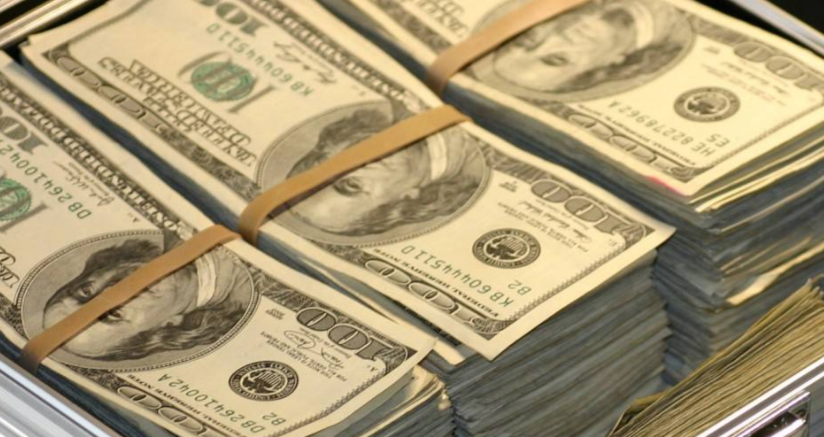Inflation Risks Persist in the U.S.
Advertisements
Since the surge in inflation that began in 2021, the Federal Reserve has been on a mission to decrease inflation rates back to the target of 2%. In response to the heightened inflation witnessed in 2022 and 2023, the Fed executed an impressive series of interest rate hikes totaling 525 basis points, aiming to cool down an economy that had undeniably overheated. However, as inflation showed signs of retreating, the Fed found itself in a comfortable position allowing for the relaxation of its previously stringent policies. In fact, since September of last year, the central bank has lowered interest rates by 100 basis points.
Despite these adjustments, the U.S. economy has shown remarkable resilience, leading to a deceleration in the anti-inflationary progress. As a result, the Federal Reserve decided to pause any further rate cuts in January. Officials at the Fed expressed the necessity to evaluate the potential impacts of the new presidential administration's policies on trade, immigration, and taxes before making any decisions regarding interest rates. This uncertainty has left the markets speculating about when, or indeed if, the Fed would resume its course of decreasing rates, particularly in an environment where attention is focused on the administration's progress on tariffs and immigration issues.
Daniel Doderer, the chief economist and research director at Flack Global Metals, pointed out a fascinating aspect of the service industry. According to him, inflation in the service sector has yet to return to pre-pandemic levels. He noted that the expulsion of undocumented immigrants and the reduction of immigrants in the labor force will lead to a decrease in available labor supply. This, combined with a persistent demand, is likely to result in wage increases to fill job vacancies.
"I think the Fed is in a very advantageous position right now to be patient," Doderer stated. He elaborated on the transition the labor market is undergoing, noting, "We are moving from a labor market with abundant supply and healthy demand to one that is supply-constrained, with constant and potentially even higher demand." Such dynamics are not promising signs for further rate cuts.
Doderer firmly believes that with inflation still above the target and the economy exhibiting robust growth potential, there is "no need for the Fed to cut rates." He added, "Therefore, our internal expectations indicate that the Fed will refrain from cutting rates this year. We think the likelihood of a rate cut this year is only slightly higher than that of an increase, given that there are numerous upward risks concerning inflation." One such risk arises simply from the threat of tariffs, which can undeniably drive up prices. Doderer emphasized that the most straightforward conclusion businesses tend to reach when unsure about how costs will fluctuate is to elevate their prices.

Even without the looming threat of tariffs, price pressures remain. Doderer pointed out that while commodity prices have generally been deflationary, housing inflation has proven "sticky," and prices for services like airfares have not receded. He mentioned, "We haven't observed the broad-based anti-inflation progress in services that we hoped for." Furthermore, an optimistic resurgence in manufacturing activity could exacerbate inflation related to goods.
Upcoming inflation data, along with Jerome Powell's public statements, may offer hints regarding the Fed's interest rate trajectory. The release of the Consumer Price Index (CPI) for January is scheduled for Wednesday, with Wall Street economists predicting a year-over-year increase of 2.9%, in line with the previous figure. The core CPI, which excludes food and energy prices, is expected to rise by 3.1%, slightly lower than the prior figure of 3.2%.
Similarly, the Producer Price Index (PPI) for January will be released on the same day. Economists anticipate a year-over-year increase of 3.2%, a decline from the previous figure of 3.3%, while core PPI is expected to see a 3.3% increase compared to the earlier 3.5% data.
The "terrifying data," known as the retail sales figures for January, is set to be published on Friday. Economists predict retail sales will see a month-on-month decline of 0.1%, following a prior increase of 0.4%. If the soon-to-be-released inflation data indicates persistent inflationary pressure, or if retail sales data showcases robust consumer support, it could further diminish market expectations for rate cuts by the Fed. Analysts have observed that recent signs of inflation stickiness in previous reports have intensified speculation regarding the possibility of maintaining current interest rates for the upcoming months. Monetary markets are pricing in a potential rate cut by the Fed around June or July, but the notions of cuts throughout the year have not reached the point of two reductions. Interestingly, according to the CME Group's "FedWatch," traders believe the Fed is likely to cut rates only once this year.
Additionally, Federal Reserve Chairman Jerome Powell is scheduled to testify before both the Senate and House committees on Tuesday and Wednesday, respectively, discussing the semi-annual monetary policy report and addressing inquiries. Powell's testimony at these hearings may provide further insights into the Fed's anticipated path for interest rates.
Market observers will be closely focusing on Powell's perspective concerning economic prospects, inflation targets, and interest rate policy. In January, he stated that there was no urgency for the Fed to pursue additional rate cuts. Analysts expect that Powell will likely emphasize resilience in the economy as a primary reason for the Fed's cautious stance regarding future rate reductions.
Currently, there exists a notable divergence among Wall Street's major firms regarding expectations of the Fed's rate cuts in 2025. Morgan Stanley has joined Barclays and Macquarie in predicting that the Fed will execute only a single 25-basis point rate cut this year, pointing to uncertainties arising from the presidential tariff policies. Conversely, Goldman Sachs and Wells Fargo still anticipate two rate cuts within the year. Deutsche Bank predicts no cuts this year, and more boldly, Torsten Slok, Chief Economist at Apollo Global Management, suggests potential hikes by the Fed as early as June.
Leave a comment
Your email address will not be published